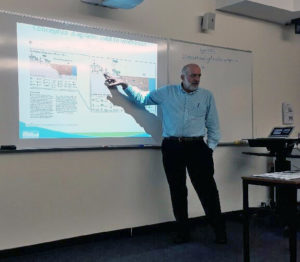4 October 2017
The Northern Hub, together with CDU’s Research Institute for the Environment and Livelihoods and the NT Government, recently hosted a visit by Professor Bill Dennison of the University of Maryland Centre for Environmental Science in the USA. A well-known science integration and communication expert, Professor Dennison and his group produce ecosystem report cards, and combine graphic and narrative techniques to effectively communicate science to a variety of audiences. A workshop to develop a vision for an integrated Darwin Harbour report card highlighted the potential for including social and economic indicators into the existing report card. In a science communication presentation to CDU researchers and students, Professor Dennison encouraged the use of conceptual diagrams in science communication as a way of transcending language and synthesising scientific information in visually attractive ways. But attractive graphics are best combined with compelling narratives to create powerful science communication stories. The ‘ABT’ (and, but, therefore) approach to narrative construction is a technique used by storytellers to introduce the issues (“and”), create tension and interest (“but”) and then provide resolution (“therefore”) – a much more effective approach than standard constructions often used by scientists. Professor Dennison also spent productive time with the knowledge brokering and communications team here at the Northern Hub.

Bill Dennison explaining the use of conceptual diagrams in science communication. Photo by Vanya Bosiocic.
Want to know more about the Resilient Landscapes Hub's activities and our research into practical solutions to environmental problems? Stay informed about activities, research, publications, events and more through the Hub newsletter.